Jotform's $0 to $1 Million ARR Marketing Strategy
Bootstrapped and blog-powered, Jotform grew through clear positioning and frictionless product access.
👋 Hey, it’s Elan. Welcome to my ‘Startup Marketing’ newsletter, where every other week I pick one successful SaaS startup and break down how it grew from $0 to $1 million in ARR. I specifically focus on their marketing strategies - where they started, what worked, and how they executed it.
In this week’s Startup Marketing series, I covered Jotform — and it was a pretty unique one.
Digging into its early-stage marketing was like opening a time capsule from the pre-social media and early web application era. Twitter and Facebook had only launched in the second half of 2006.
About Jotform
Jotform is an online form builder platform founded in 2006. Today, it brings in $145M+ in revenue, but the early growth was slow and steady. Based on available data, it took around 4 years to hit $1 million in ARR.
The Team
Aytekin Tank started Jotform as a solopreneur and for the first year, he built Jotform alone. He hired Rustu Seyhun as employee #2 to help with the development. Over the next 5 years, he added just one employee per year — slow scaling in every sense.
The Premise
Bootstrapped from day one
One man team for the first year.
First web-based WYSIWYG (drag-and-drop) form builder
Launched pre-social media and Hacker News era.
Back then blog search engines like Technorati were a thing.
Jotform’s Marketing Strategy
Jotform’s marketing strategy was to target webmasters and web designers — people who routinely needed to create forms for websites. The goal was to get them using Jotform and encourage feedback and sharing.
So how did Jotform go about it?
Leveraged ‘blogosphere’ and tech communities forums
Made the product open and friction-free
No signup required to use it
Free for all users
Shareable links for forms
The Launch
Aytekin positioned Jotform as a new kind of web-based form builder — a showcase of what was possible with JavaScript. While other form builders were clunky or code-heavy, Jotform offered a visual, drag-and-drop experience.
With this unique narrative, he reached out to peer bloggers and posted in tech community forums where his target audience hung out.
Blogosphere
Before social media, blogging was how ideas spread. And it wasn’t a one-way monologue like today — people engaged in conversations through comments and shared it in their blogs.
Internet users relied on blog search engines and RSS readers to stay updated with the blogs they followed.
Why the internet history lesson? Just to give you a sense of what getting covered in blogs meant back then — it was the equivalent of going viral on social media today.
Aytekin maintained his own blog and was an active member of the technical blogging community. He used this ecosystem as the launchpad.
He wrote a sequence of posts around the launch - build up, release, and post launch - and each of them garnered great responses.
He also got his peer bloggers to cover Jotform launch.
Online Software Communities
Aside from blogs, Aytekin shared Jotform on forums like Business of Software — one of the top tech communities at the time.
Frictionless Product Access
Aytekin focused on making it as easy as possible for users to explore the product. That mindset led him to break the status quo and do things differently.
Application as the Homepage
The #1 reason people abandon a product page?
They don’t know if it’s worth their time and effort.
Aytekin took this seriously. The result?
Jotform’s homepage was the application itself.
It stayed that way for the first 5 years, until 2011. Users could land on the site and immediately start building a form — no signup forms, no fluff, no marketing distractions.
You expect web users to trust you and invest their time. But why should they? They just met you — and they’re in a rush. They are always in rush because they have been burned many times before by spending hours on sites like yours without getting anything accomplished.
- Aytekin Tank, Founder, CEO, Jotform
The irony? Aytekin built a form builder that didn’t require you to submit a form to use it.
Freemium by default
The #2 big friction point? Paywalls.
Aytekin addressed that by making the product completely free for the first year.
The freemium model also encouraged sharing — users didn’t have to think twice before recommending Jotform because there was no cost barrier. A premium plan was introduced only in 2007, a year after launch. Even then, the freemium plan stayed — and it still exists today.
This opened the door for wider adoption and organic reach through word of mouth.
The Impact
All the early coverage and frictionless product experience gave Jotform the traction it needed.
3,611 forms were created in the first five days after launch.
562 users signed up to the product.
It gave Aytekin valuable early feedback on both the product and the business model.
Built-In Virality
Initial traction was great — but what kept the momentum going without ad spend and with a lean team?
Shareable form links.
People used Jotform for everything: contact forms, event registrations, surveys, lead generation — and every form came with its own unique link. Users could copy the code or just share the URL.
So every time someone ran a survey and shared the link in their network, they were also spreading awareness of Jotform.
It was subtle — but powerful.
Jotfom’s Growth Loop
Conclusion
No matter the era or tech trends, the fundamentals of go-to-market haven’t changed:
Build something that solves a real problem
Identify and take it to the niche
Make it ridiculously easy to try
Give users a reason to share it
We’ve seen the same playbook in companies like Figma, Webflow, Flodesk, Miro — and now, Jotform.
Simple doesn’t mean easy. But it does work.




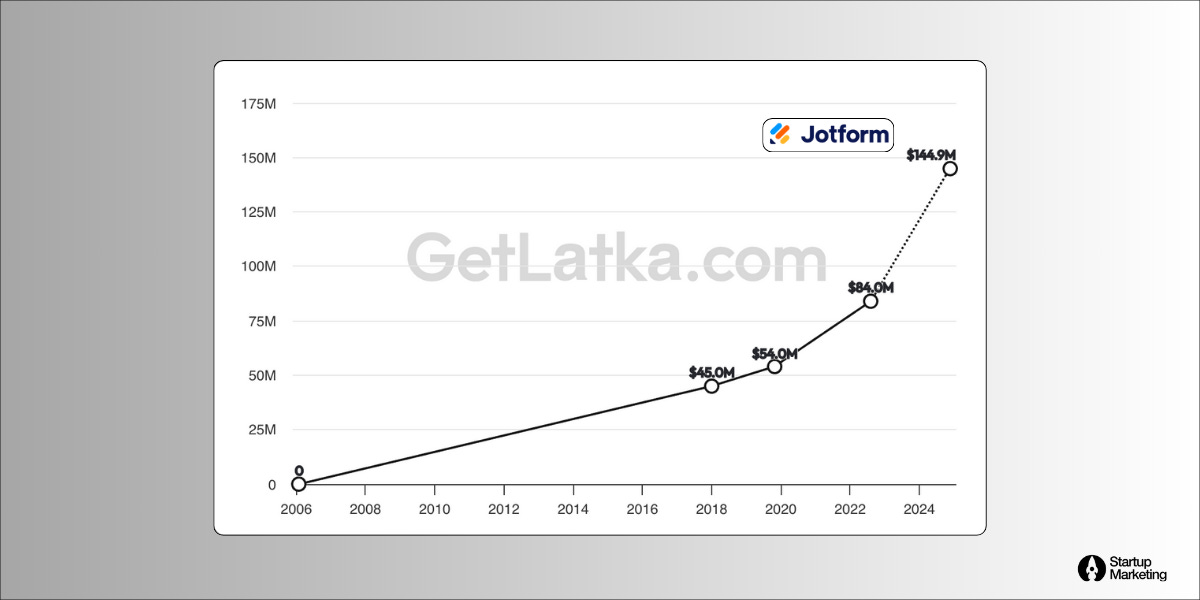

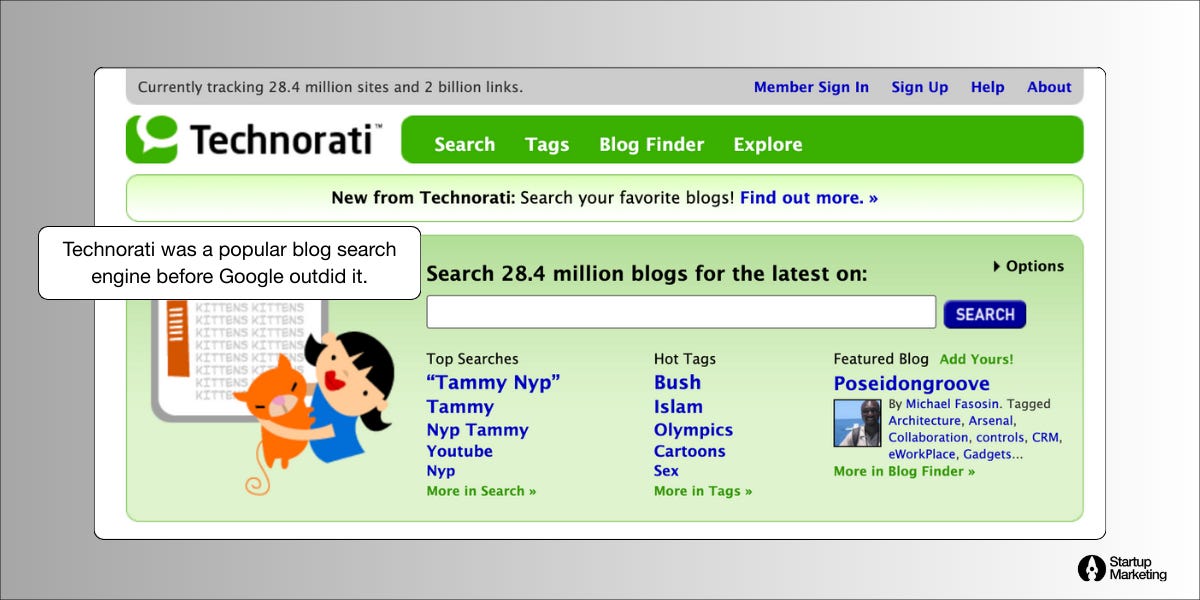
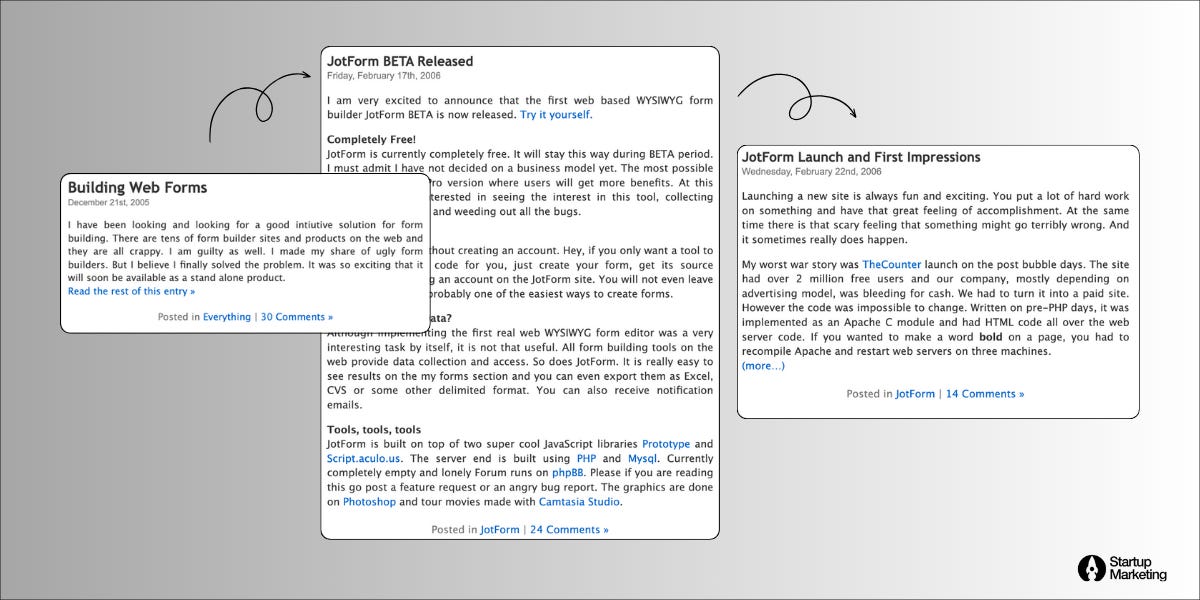
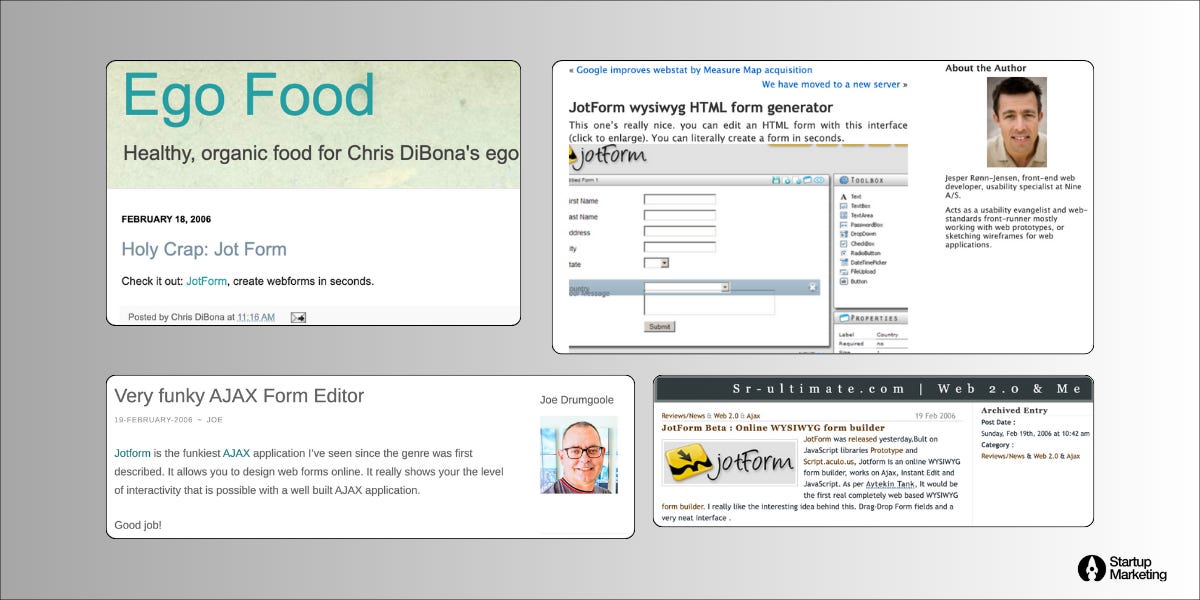


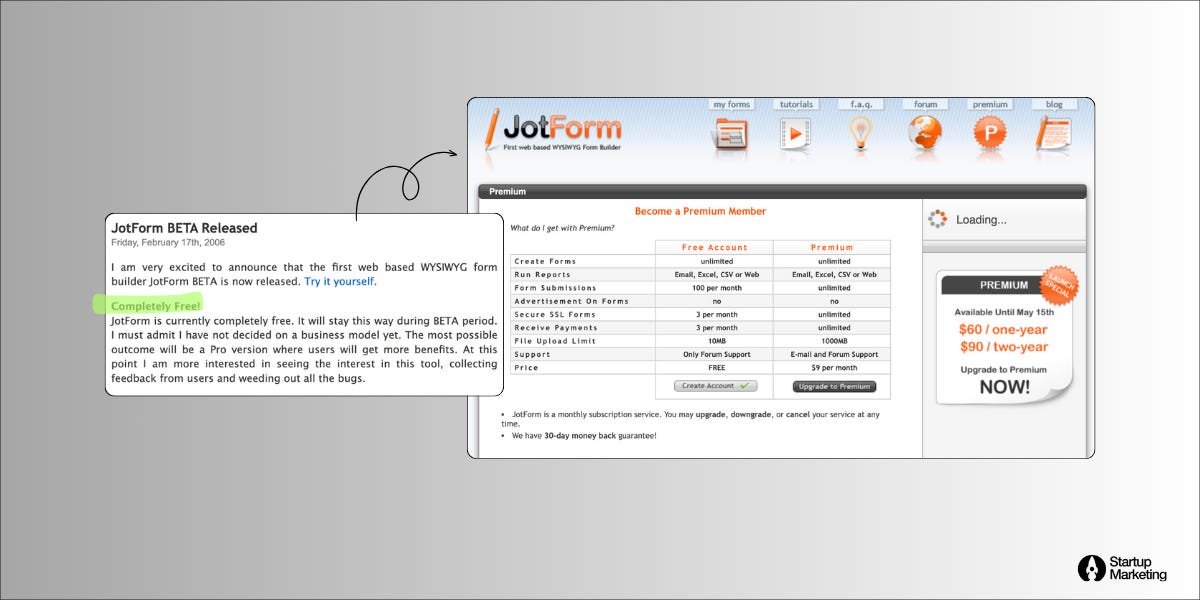
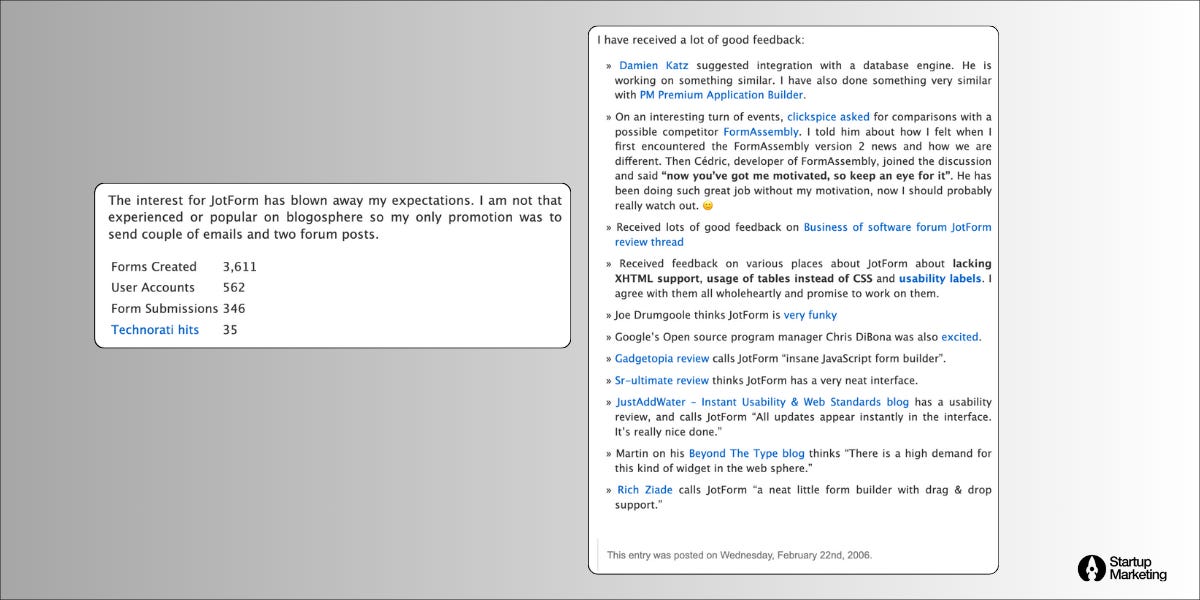
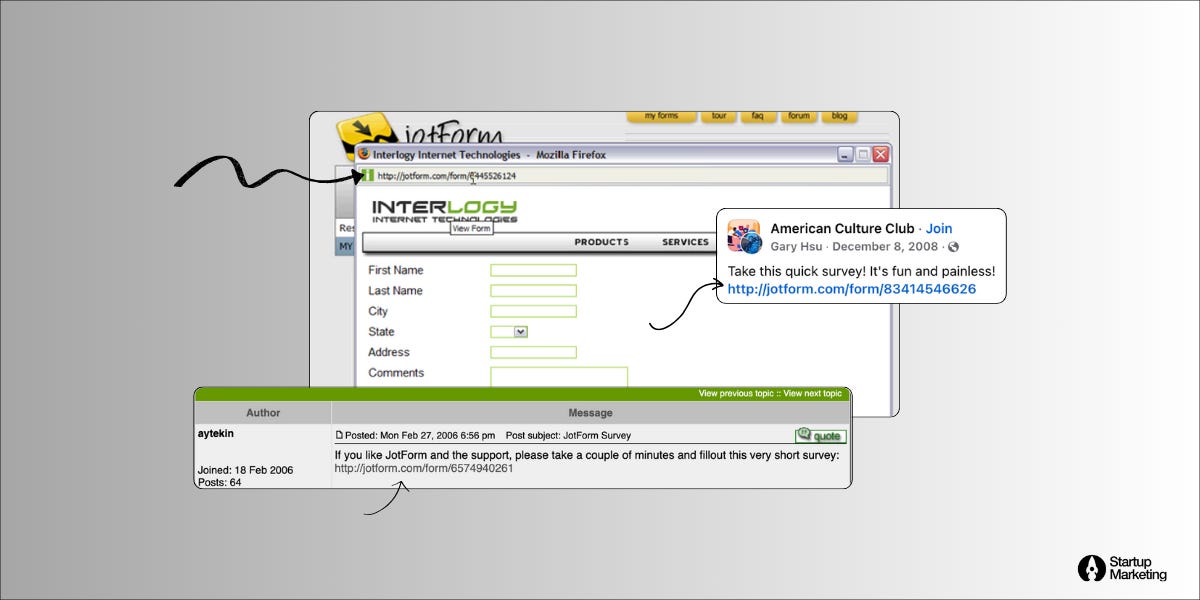
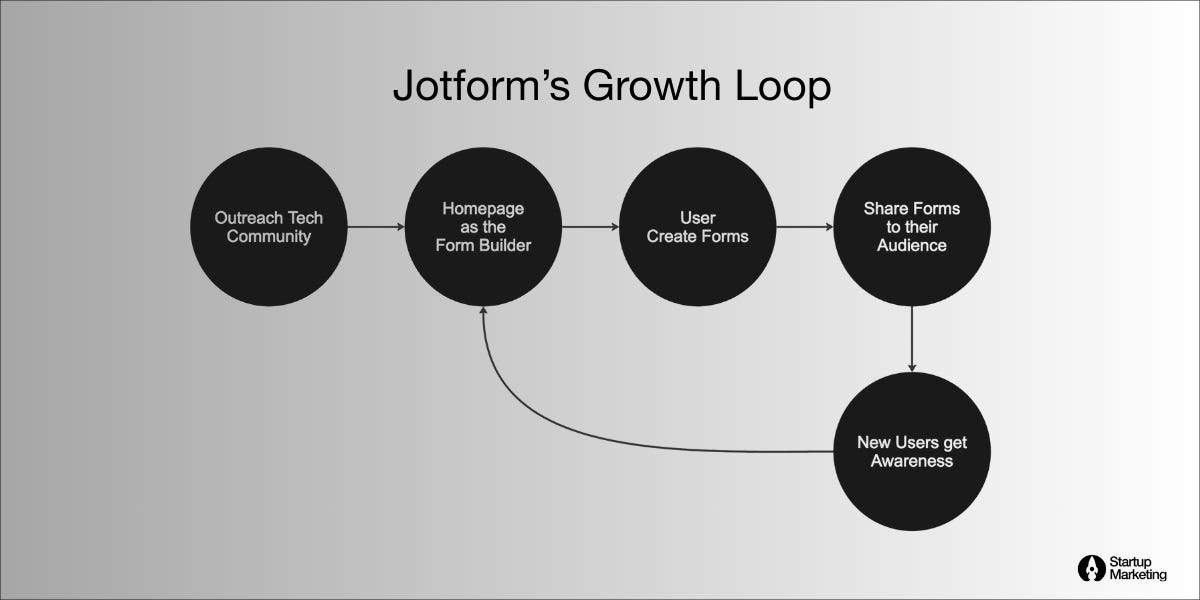
It was great reading this post. The insights and the GTM process particularly the community back in those days is groundbreaking. Also, loved the conversational tone.